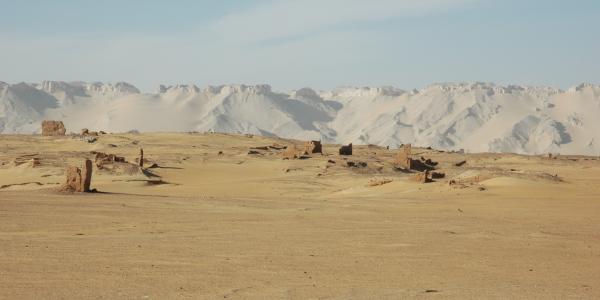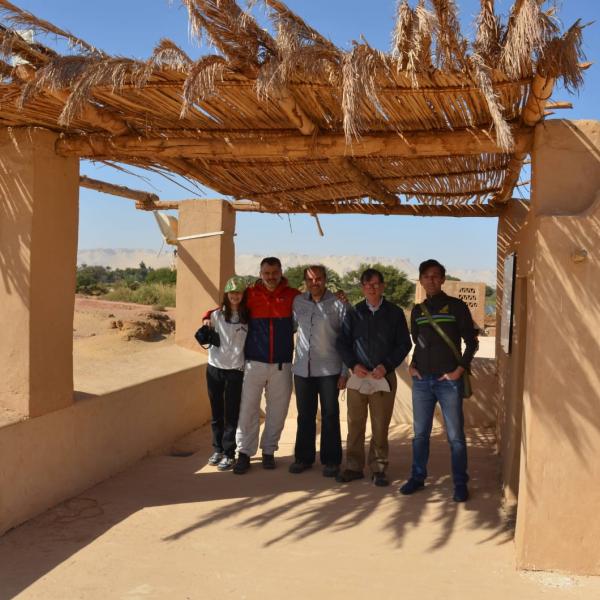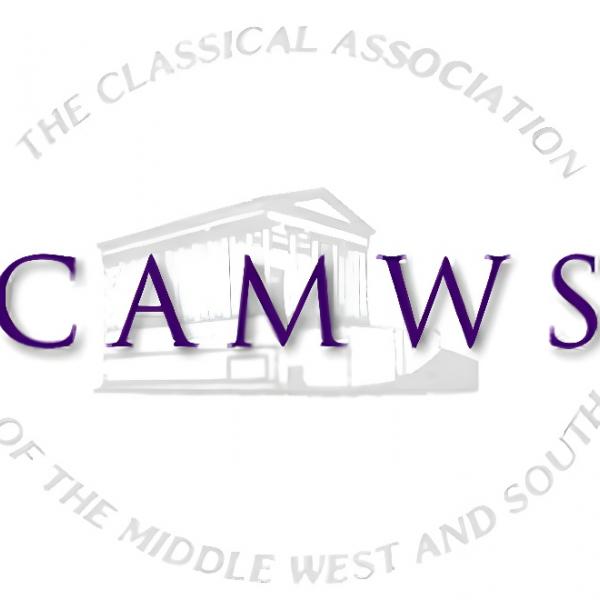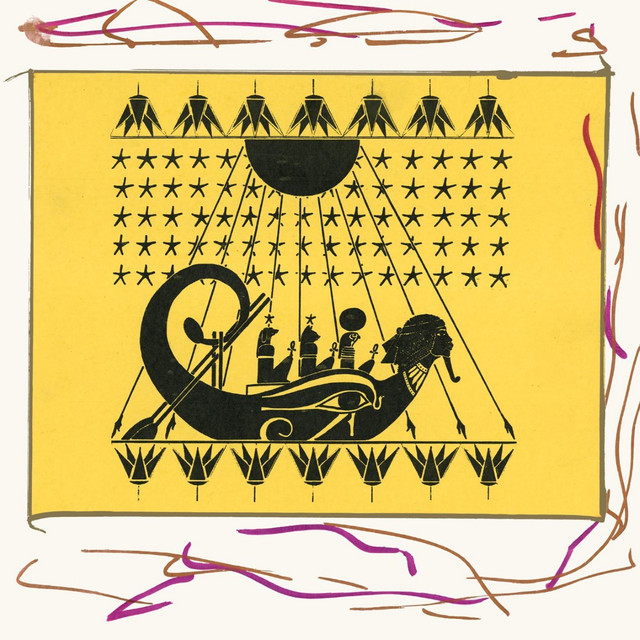
Sun Ra, Afrofuturism, and the Reception of Ancient Egypt
3:30 pm | Friday, October 14
Women’s Building Formal Lounge
Rita Lucarelli, associate professor of Egyptology, University of California, Berkeley.
Keynote lecture of the Fourth Annual Missouri Egyptological Symposium, October 14-15.
On October 14–15, 2022, the Fourth Annual Missouri Egyptological Symposium (#MOEgypt4) will take place on the Danforth Campus of Washington University in St. Louis. The organizers are three Missouri-based Egyptologists Nicola Aravecchia (assistant professor of classics and of art history and archaeology at Washington University), Julia Troche (associate professor in the Department of History at Missouri State University) and Anne Austin (assistant professor of anthropology in the Department of History, University of Missouri–St. Louis).
The first Missouri Egyptological Symposium was held at Truman State University and organized by Sara Orel (professor of art and art history at Truman State University) in 2018. Troche shared Orel’s vision to create a community for students and scholars of Egyptology in Missouri and has organized (or co-organized) subsequent symposia in 2019 (Springfield), 2021 (Rolla) and 2022 (St. Louis). Both Troche and Orel felt a sense of scholarly isolation at their respective universities, where they were always the only Egyptologist and both had loved their interdisciplinary, active PhD programs wherein scholars regularly collaborated and shared research. To that end, the Missouri Egyptological Symposia Series was born, driven by goals of inclusivity, opportunity and community-building.

At every symposium, “traditional” and “nontraditional” academics, museum professionals, students and independent scholars who may be looking for a supportive space to present new work are invited, though all abstracts are refereed. Each year, we see innovation in the symposia series. In 2019, the symposium was hosted at Missouri State University and included an educators’ workshop (sponsored by an AIA Society Outreach Grant) that aimed to extend our community of ancient historians to include area K-12 educators with a focus on pedagogy. Some of the papers from this symposium will be published at the end of this year in a special volume of the Journal of Ancient Egyptian Interconnections, co-edited by Bryan Brinkman (assistant professor in the Department of World Languages and Cultures at Missouri State University) and Troche, titled Beyond Egypt: Relations and Imaginations of the Ancient Past. In 2021, many slots in the schedule were filled with students and independent scholars. At the University of Missouri S&T in Rolla, we offered our first poster session and co-hosted a film “watch and discuss” event of The Mummy (1999) with students and presenters from the symposium.
This year, the Fourth Annual Missouri Egyptological Symposium is bigger and better than ever, thanks to the generous support of our sponsors, which are the American Research Center in Egypt, Missouri Chapter and Washington University’s Department of Classics and Department of Art History and Archaeology. On October 14 (the Friday before the symposium), we will host our first keynote lecture: Rita Lucarelli (associate professor of Egyptology, University of California, Berkeley) will give a talk on “Sun Ra, Afrofuturism, and the Reception of Ancient Egypt.” The symposium itself will include a dozen papers, ranging from ancient Egyptian religion and language (including a paper by Aravecchia and another by his Washington University colleague Lance Jenott) to the reception of Ancient Egypt (e.g., in Midwest architecture and in Tolkien), and Egyptology and public history, plus a session on learning from coffins and mummified remains (including a paper by symposium co-organizer Anne Austin and another by Washington University colleagues L. Lewis Wall and Michelle Miller-Thomas). More specific information about the symposium, which will be held in the Women’s Building Formal Lounge, can be found on our event website.
In addition to hosting the symposium, Washington University offers a wide range of resources and opportunities to study Ancient Egypt. Olin Library’s Special Collections house more than 400 papyri dated from the first century BCE to the eighth century CE; they were discovered in 1923 at the Egyptian city of Oxyrhynchus by Sir William Flinders Petrie and then donated to Washington University. Numerous coins from Graeco-Roman Egypt are also hosted in the John Max Wulfing Coin Collection, curated by William Bubelis (associate professor of classics at Washington University). And, of course, one should mention the mummified remains of two ancient Egyptians in the collection of the Mildred Lane Kemper Art Museum and on long-term loan at the Saint Louis Art Museum.
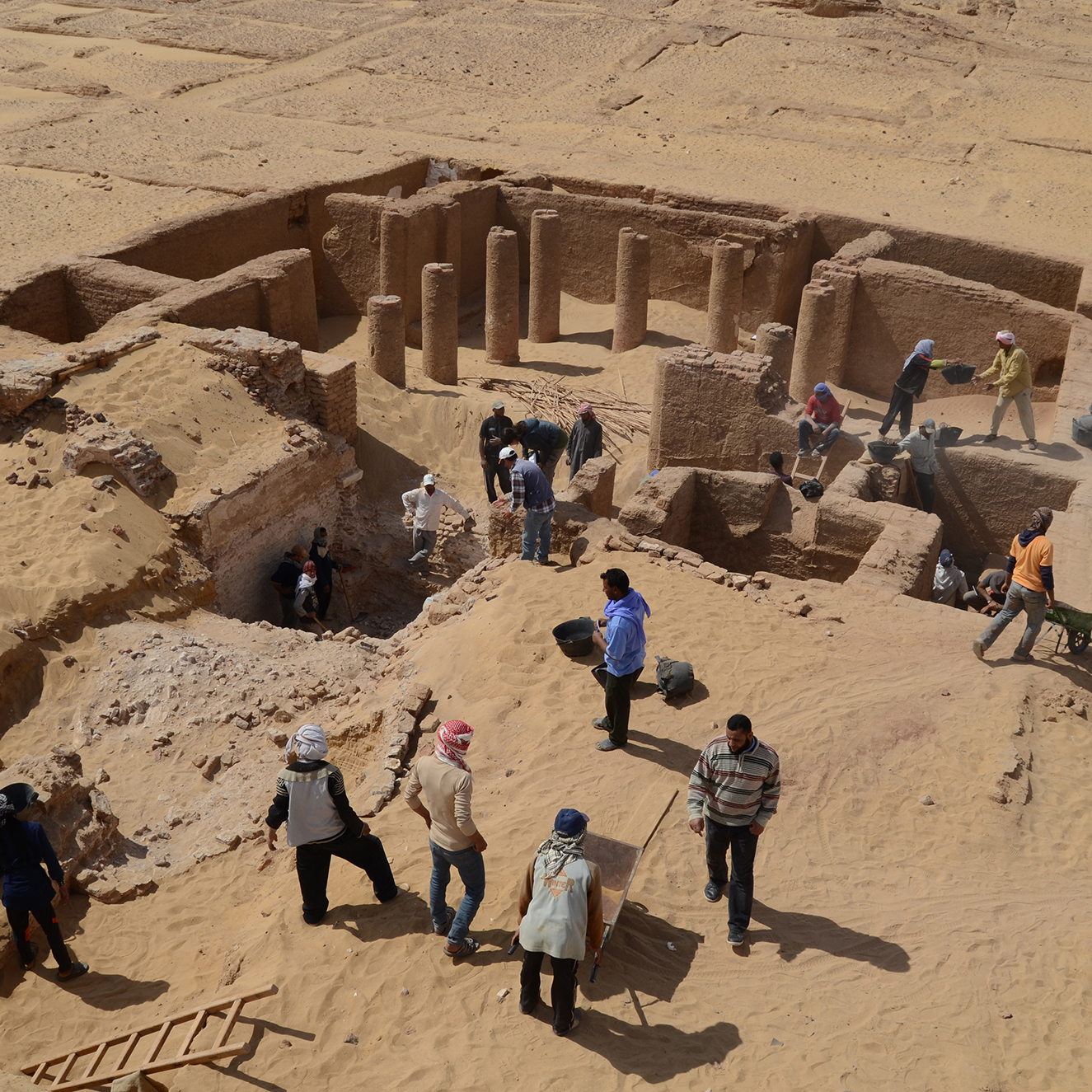
Aravecchia, who is one of the organizers of the symposium, also teaches numerous courses at Washington University on the art and archaeology of Ancient Egypt, from the Pharaonic period to Late Antiquity, and on the reception of Egypt in the Graeco-Roman world. He is also the archaeological field director of the excavations at Amheida, located in Dakhla Oasis (Egypt’s Western Desert). Amheida is the site of ancient Trimithis, an extensive settlement that was occupied already in the Old Kingdom (ca. 2500–2000 BCE) and whose currently visible remains are largely late Roman in date (third to fourth centuries CE). Twenty years of excavations at Amheida have shed light on the environmental challenges and the complex — and fascinating — economic, social, cultural and religious life of a community at the edge of the Roman Empire.
Headline image: View of the ancient polis (city) of Trimithis (modern-day Amheida), located in Dakhla Oasis in Egypt’s Western Desert. Photo courtesy Nicola Aravecchia.

